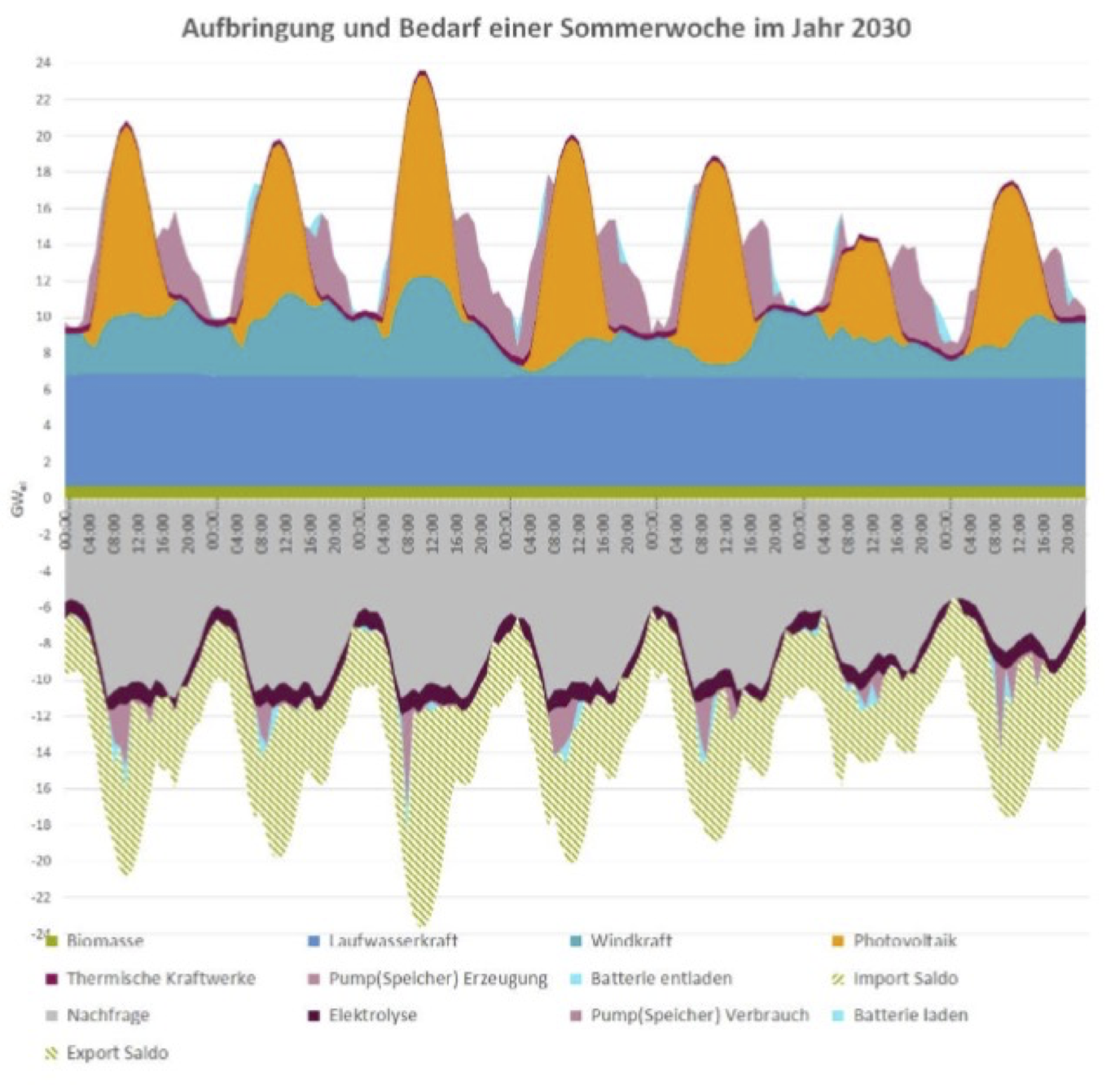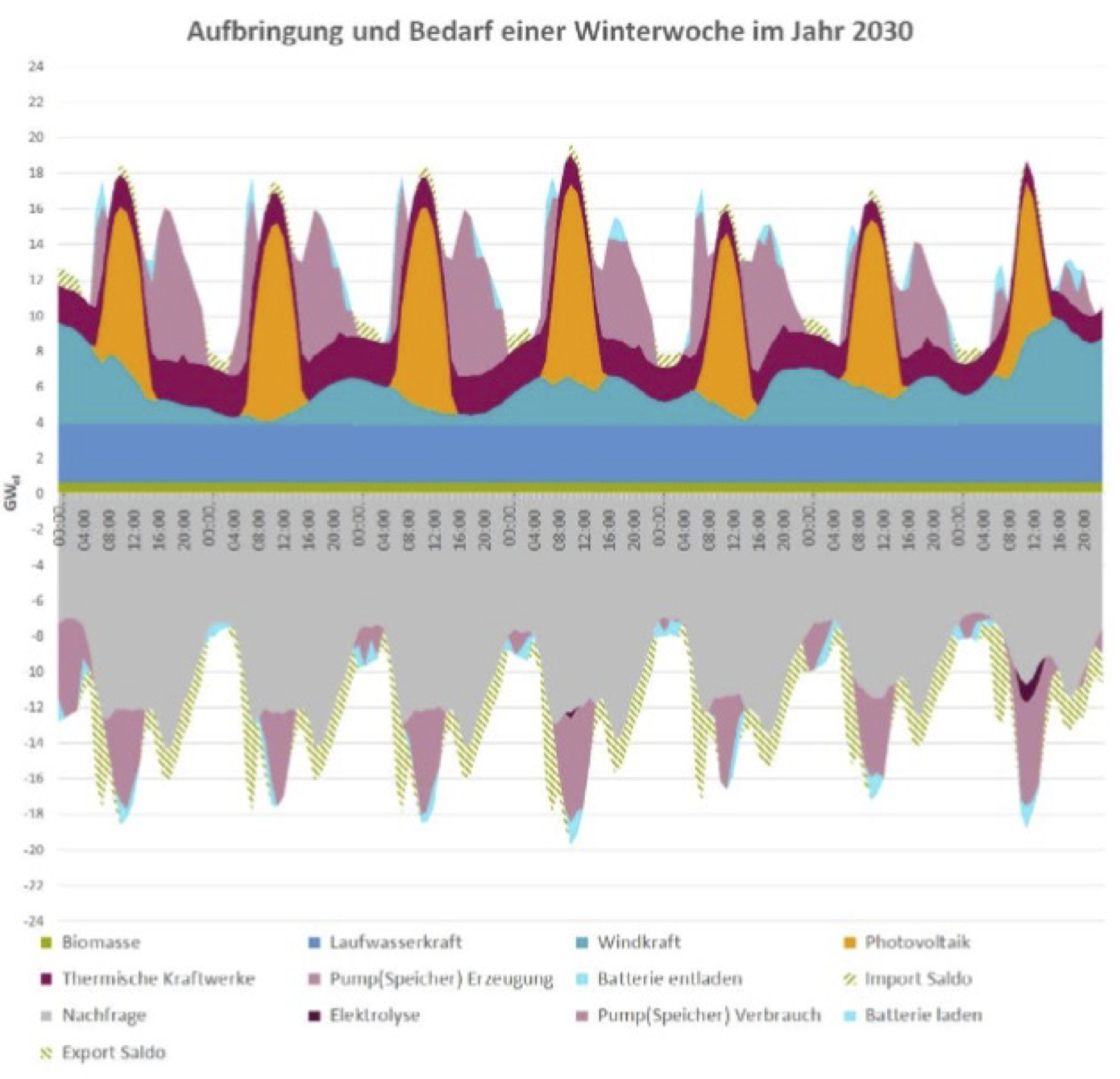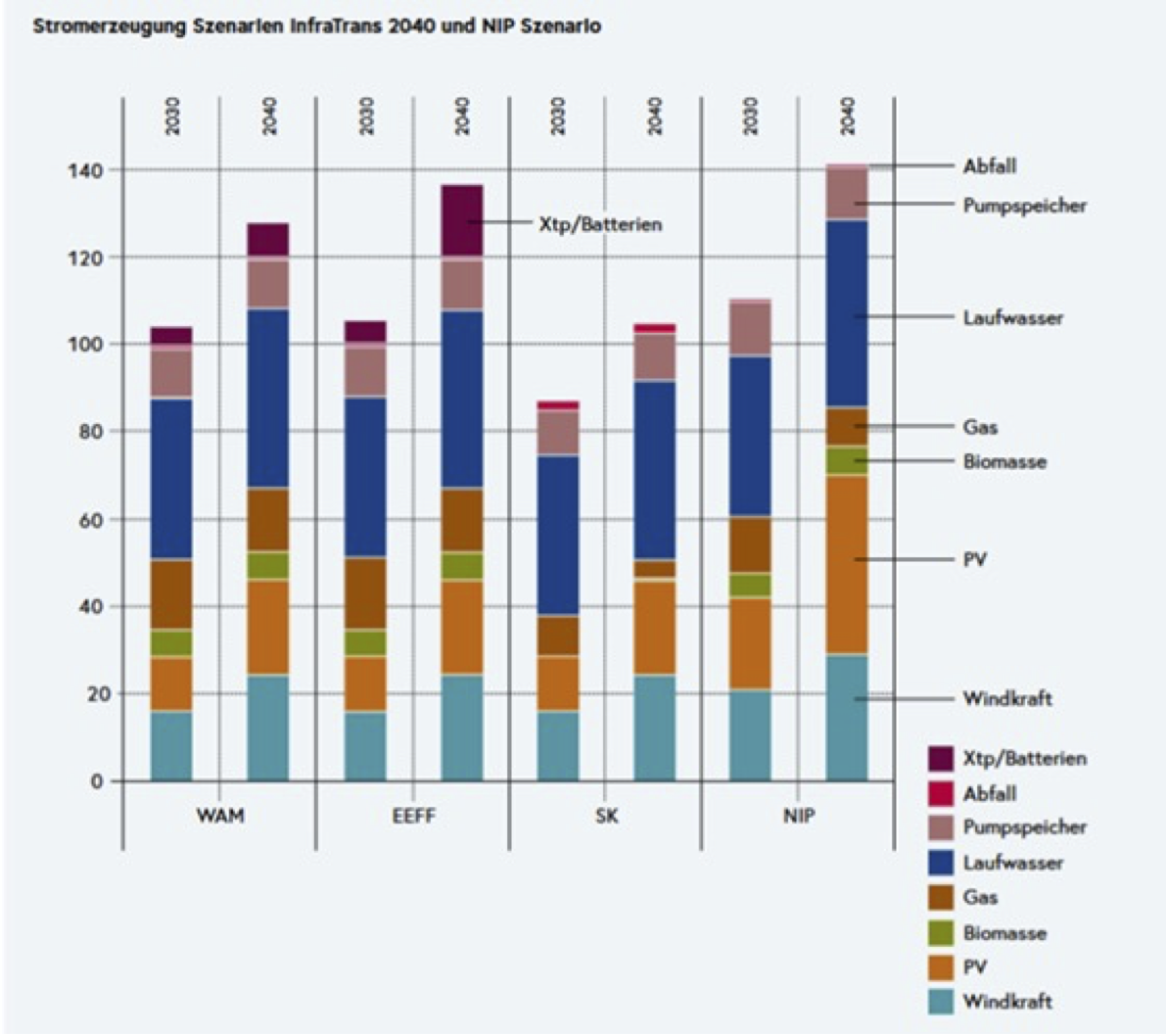The integrated Austrian grid infrastructure plan (ÖNIP) is intended to "elevate" energy infrastructure planning from a project-oriented approach to an overarching, strategic orientation - in other words, the interactions and synergies between the energy sources and the consumption and generation sectors are utilised in the planning, construction and operation of infrastructure.
The basic assumptions made for the ÖNIP are: a) the achievement of climate neutrality by 2040 (100% nationally balanced renewable electricity in 2030), b) the modernisation of the energy infrastructure with regard to sustainable and continuous security of supply, c) the cost-efficient implementation of the energy infrastructure, d) the coordination of grid expansion with the expansion of facilities for the storage of renewable electricity and gas - taking into account the national electricity and gas infrastructure plans), e) the strategic environmental assessment for compliance with ecological criteria.
The present ÖNIP obviously contains some (serious) bugs, which will be critically analysed below. These are - preliminary:
It is clear from the terms of reference that the ÖNIP sets the framework conditions for future investments worth billions - and must therefore be drafted and accompanied by experienced experts. Postponing/referring to improved versions of the ÖNIP - which is to be prepared every five years - to a later date jeopardises the achievement of the target (climate neutrality in 2040) and is likely to increase the additional investment requirements. This is particularly true in view of the short timeframe until the climate neutrality deadline. Investments in energy infrastructure require long lead and execution times - see "Salzburg" power line. Including a major investment in the next or even the next but one ÖNIP 2027-2028/2032-2033 could be far too late.
Under 2.3.3, "Gas infrastructure" page 31, the ÖNIP states that the natural gas import capacity from Slovakia to the Baumgarten station is 1.5 GW. This is not correct - this pipeline actually has an import capacity of 65 GW, which is 43 times more. Unfortunately, this is not a careless error, but a multiple conversion error as the export capacity to Italy and also to Germany was also not converted correctly.
The output to Italy is not 1.1 GW (see p. 32 of the ÖNIP) but 48 GW and to Germany approx. 25 GW instead of 0.5 GW (see also p. 32 of the ÖNIP) - if all export and import possibilities are added up correctly. The stated 1.5 GW capacity in Baumgarten would enable an import volume of approx. 13 TWh/year. Austria alone needs approx. 75 TWh/year (in the eastern market area). Not to mention the former enormous transit from Slovakia via Baumgarten to Italy (up to 270 TWh/year). The stated export capacity of 1.1 GW to Italy would enable exports of 9.5 TWh/year instead of the 270 TW/year.
Entering incorrect data into models can - understandably - lead to incorrect results.
Apparently, errors have also crept into Fig. 60 (Electricity generation summer 2030) page 117 and Fig. 61 (Electricity generation summer 2030) page 118:


Here, approx. 7-8 GW of run-of-river electricity production capacity is shown for the summer and approx. 4 GW for the winter. The utilisation rate for run-of-river water in Austria is approx. 60% in summer and approx. 40% in winter (on average!).
Deriving these figures means that in 2030 we would already have approx. 11.4 GW of run-of-river capacity installed (instead of the current 5.9 GW). It is to be feared that run-of-river power plants, storage power plants and pumped storage have simply been added together here. For comparison, see: https: //markttransparenz.apg.at/de/markt/Markttransparenz/erzeugung/installierte-leistung The presentation in the aforementioned charts - based on the data assigned to them - leads to an error of at least 6 TWh (base band) in the summer quarter alone.
In Fig. 84 "Electricity generation scenarios InfaTrans2040 and NIP scenario" p. 156, the amount of electricity generated by hydropower in 2030 in the NIP scenario is shown as approx. 52 TWh/year - see inserted graphic.
If the 52 TWh/year generated by hydropower in 2030 in the NIP scenario is subtracted from the approx. 12 TWh/year generated by pumped storage, the amount of electricity generated by run-of-river power plants is approx. 40 TWh/year. Currently, approx. 27 TWh/year are generated by run-of-river power plants. The assumed additional volume of 13 TWh/year (= 40 - 27) would correspond to around 13 - 14 Danube power plants of the same size as Freudenau. How this can be achieved by 2030 is beyond me. The amount of electricity generated by pumped storage in 2030 in the NIP scenario is shown in the following diagram, which was included in the first version of the ÖNIP (Fig. 74 on p. 109) and submitted for consultation.
Although the discrepancies described above were reported to the authors in good time during the consultation phase, these probable bugs were unfortunately not corrected in the first ÖNIP.


To be continued.
